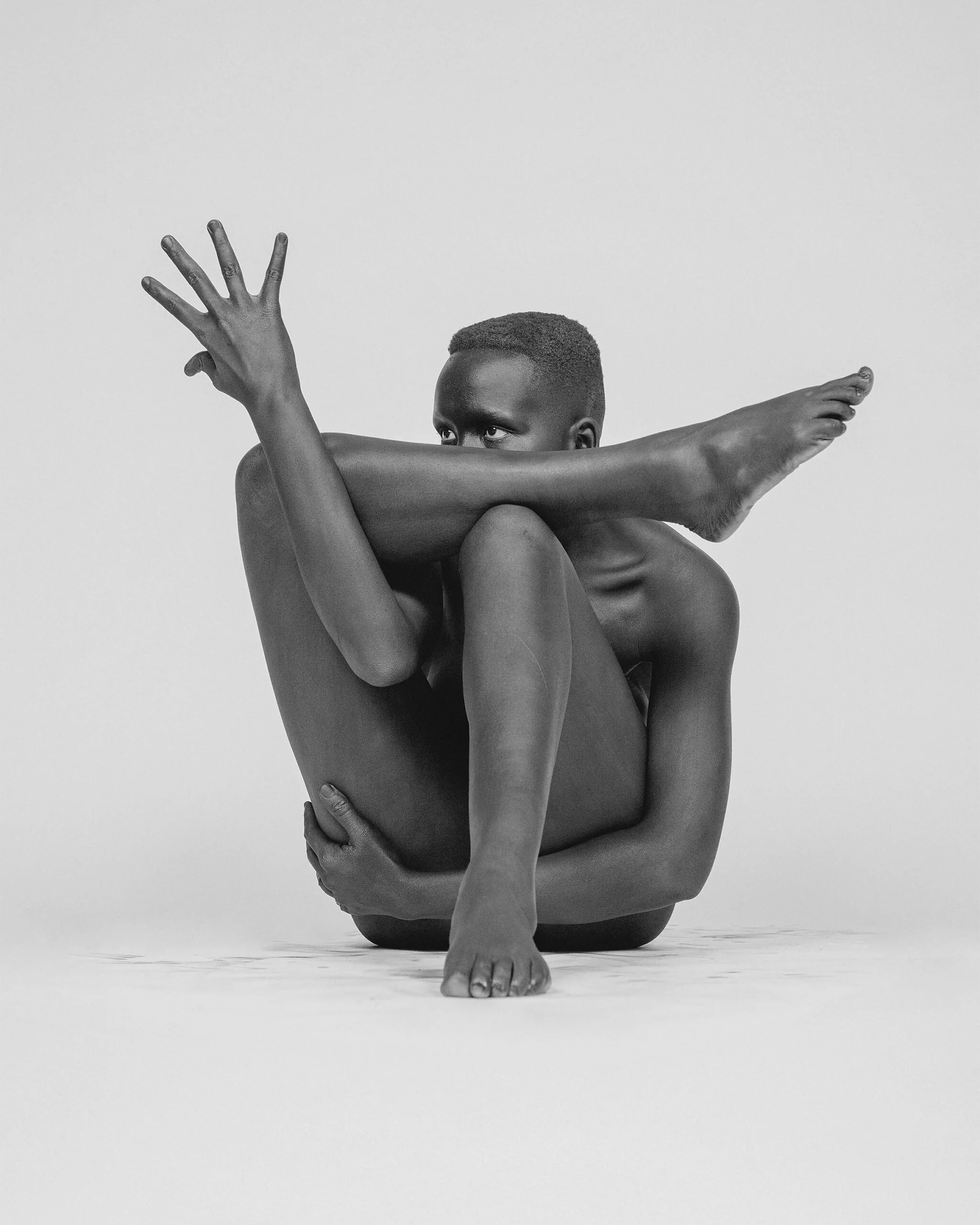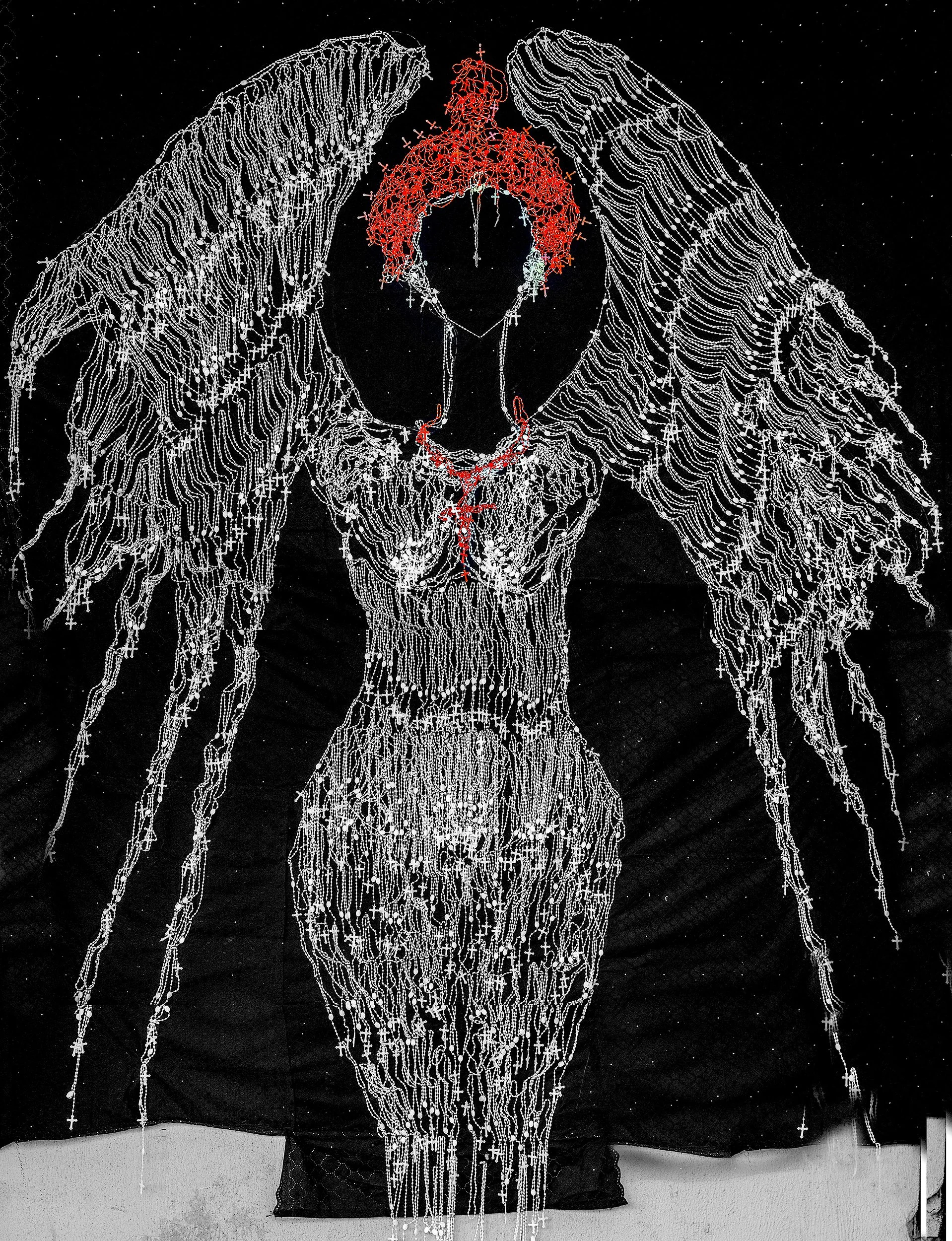Sankofa explores Black diasporic identities through works by contemporary artists from Nigeria and Vancouver
New exhibition at the Museum of Anthropology is rooted in a philosophy that has come to be associated with cultural pride
. Bia Atôbe (Nya), by Michèle Bygodt (Vancouver), 2021. Courtesy of the artist.
The Museum of Anthropology (MOA) at UBC presents Sankofa: African Routes, Canadian Roots from November 4 to March 27, 2022.
AFTER TITILOPE SALAMI moved to Vancouver from Lagos, Nigeria, in 2019, she found herself being asked time and time again where she is from. A member of the Yoruba tribe, she was taken aback, unaccustomed to feeling out of place. It was art that helped ground her, while experiences relating to her identity fuelled her work as a co-curator of a major new exhibition at MOA.
Sankofa: African Routes, Canadian Roots features works by contemporary artists from Nigeria and Vancouver and focuses on themes of African and Black history, affirmation, cultural identity, and vitality.
“I have to say in Nigeria, where everyone is Black, there was no issue of me having to prove myself or say ‘This is my culture, this where I’m from, this is what I believe in,’” Titilope says in a phone interview with Stir. “I found that to be an issue when I got here, and after interacting with lots of people I realized that this is an experience that most Black people here are facing. There is a question of displacement when people say ‘Where are you from? You must be from somewhere in Africa.’
“This issue of identity—questions like ‘Who am I? Do I really fit in? Am I Black enough? Am I not Black enough?—is an issue that most Black people can identity with. We [the Sankofa co-curators] started looking at how contemporary artists in Nigeria and other African countries and also in Canada have been going back to their ancestral past to understand the present.”
Titilope Salami.
Sankofa: African Routes, Canadian Roots is jointly curated by Salami; Nya Lewis, an independent curator based in Vancouver as well as the founder and director, BlackArt Gastown; and Nuno Porto, MOA curator, Africa and South America.
The exhibition takes its name from a term originating in present-day Ghana that means to “go back and get it”. The phrase refers the philosophy of moving forward while staying rooted in tradition and has come to be associated with cultural pride. The exhibition uses the expression as a jumping-off point to share work by contemporary artists from Vancouver and Lagos and to explore different ways of understanding the world through the lenses of African and Black communities.
With 30 works by 16 artists as well as more than 100 objects from the MOA collection, Sankofa has nine themes: recognition, remembrance, reconnection, restoration, reparation, reclamation, restitution, return, and reconstruction. These come through via sections that focus on wealth, devotion to orishas, Islam, Christianity, looting, and repatriation. Sankofa also features an installation curated by Oluwasayo Olowo-Oke, a Master’s of Arts candidate at UBC in the department of art history, visual art and theory.
I am Queen Idia, the Angel of Kings, by Victor Ehikhamenor (Nigeria), 2017. Courtesy of the artist.
Salami is a PhD candidate in the same department at UBC. Her research is focused on comparing museum policies in Anglophone and Francophone West African countries, with a specific focus on Nigeria and Senegal to examine if there has been any shift in museum operation in the two countries. Her intention is to investigate how the museums have been decolonizing and reimagining their policies to include local voices and interpretations.
Throughout her time in Vancouver, during which she has been working on Sankofa, Salami has been reminded of how art is a link between past and present, a way to stay connected to your heritage and to simultaneously move forward.
“When this exhibition surfaced, it was an avenue for me personally to confront the fact that we are Black, and regardless of what you are doing as an artist in this time, there is a connection and a relationship between what you’re doing and your ancestral past. So, we’re not really displaced. We’re not far placed from home when you look at it like this.
“The connection is not linear, but you can trace a sense of belonging through art,” she says. “This gives me more affirmation that I have a background, a standing; it’s something that I should be proud of and be confident to come out and say ‘Yes, this is who I am and this is what I belong to.’”
Figures, maker unrecorded (Yoruba), 2019. MOA Collection 3406/1, 3406/2. Photos by Alina Ilyasova
Part of the exhibition’s aim is to eliminate notions of a homogenous African culture. To describe art from anywhere in Africa as “African art” is misleading. The exhibition also aims to shed light on the long-standing presence of the Black community in Vancouver.
“In seeing the different objects, there is a lot to learn about diverse practices and perspectives,” Titilope says. “There is a generalization I find that is very common in the Western world about African art. African art is not one. What we have in the exhibition are fragments from Africa and from here. Black people have been here for a very long time; they are a part of Vancouver’s history.
“Even saying ‘Nigerian art’ would be a generalization,” she says. “I can’t say I know everything about Nigeria because it is so diverse. We have different cultures, differed tribes, different languages. So we can’t categorize the entire African content as one.”
Sankofa features work by Lagos artists Jelili Atiku, Victor Ehikhamenor, Peju Layiwola, Onome Olotu, Onosanya Onolaja, and Stephen Tayo; Vancouver artists Berlynn Beam (of Black Arts Vancouver), Michèle Bygodt, Chantal Gibson, Odera Igbokwe, Chase Keetley, and Nya Lewis; as well as Yinka Adeyemi, Yekini S. Atanda, Z.K. Oloruntoba, Roodley Jeune, and more than 100 other works from MOA’s collections from Africa and the African diasporas.
“Sankofa addresses the uncertain moment that many Black Canadians face when they enter a museum and encounter a historicized version of Africa — how can one relate to these objects that have been removed from contemporary Black culture?” Lewis says in a release. “Sankofa provides a space for viewers to investigate the African collections at MOA and reflect on how the stories, creativity, and traditions that live in these items might be re-examined to find the truth and history of who Black Canadians are now. Sankofa aims to build bridges of recollection and forge new relationships between the many diasporic identities found across the city and beyond.”
In exploring relationships between traditional and contemporary art from Africa and Black Canadian contemporary art, the exhibition is both rare and vital, Titilope says.
“I’m very excited that exhibition is happening, because there are not many of this type where you have a collaboration with artists in Africa and Vancouver, so that in itself is exciting for me,” Titilope says. “My desire is that people regardless of culture, regardless of nationality, come away from this exhibition knowing that these are fragments showing the diversity of Black people in Africa and Black people here, and that they find a link between what was and what is.”
For more information, see MOA.
















